Life on a Hilltop
The pizza in Efrat is delicious. There’s a shop in the southern part of the settlement that serves large slices with thick crusts and real cheese, which is not surprising since it is located in a West Bank settlement that is heavily populated by immigrants from the United States.
American Jews are no rarity in the West Bank, as is well known, and the tens of thousands who reside there have for a long time received a great deal of media and scholarly attention. In City on a Hilltop: American Jews and the Israeli Settler Movement Sara Hirschhorn presents a history of the American participants in the settler movement, including those who once established themselves in, but were long ago removed from, the Sinai Peninsula. Her valuable book provides a wealth of information about these people, even if it leaves readers wondering about some crucial aspects of their lives and experiences.
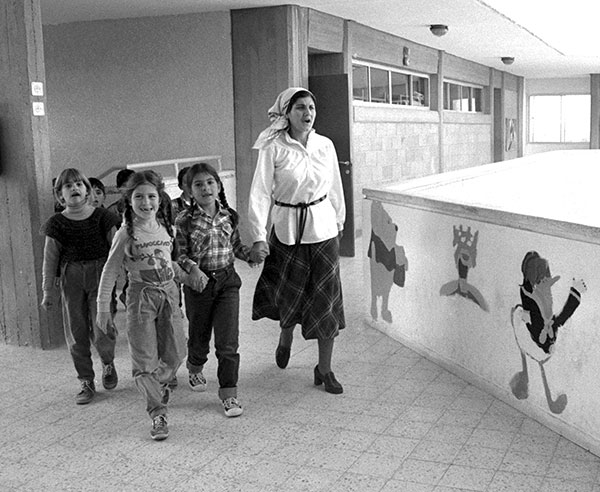
Hirschhorn’s account begins almost inevitably with Israel’s astonishing victory in the Six-Day War, which she describes as a “watershed” moment for American Jewry that “profoundly reconfigured the emotional concerns of those who would migrate to Israel and the occupied territories.” However, she also moves beyond the “cosmic drama” of 1967 to reflect on the impact of the Holocaust, the revival of ethnicity, and a marked disillusionment with the politics of the New Left that both pushed and pulled certain American immigrants toward the settlements in Israel’s newly acquired territories. Her book makes a convincing case that these immigrants were inspired just as much by American progressive values of “pioneering and building new, utopian, suburbanized communities” as they were by ancient biblical imperatives. Hence her very apt title choice, which of course echoes the 17th-century Massachusetts Bay Colony governor John Winthrop’s call to build a “city upon a hill” that would be a moral beacon for others. If the settlements have fallen short of such grand ideals, as she clearly believes they have, it is in large part because the area in which the settlers sought to implement them was not a vacant wilderness but a land roiling with conflict.
At the center of her book are three chapters that describe the establishment of the settlements of Yamit (in the Sinai Peninsula), and Efrat and Tekoa (south of Jerusalem). Contingents of American Jews played a central part in the founding of all three communities, and Hirschhorn utilizes their stories to highlight both the opportunities and problems presented by the settlement project. She does an expert job of interviewing major figures from each settlement and in capturing the personal, the humorous, and sometimes the deeply emotional dimensions of the lives of these self-described pioneers. Throughout the narrative Hirschhorn works to offer a complex understanding of American Jewish settlement in the West Bank and Sinai, one that is marked by historical empathy, which is not to say sympathy (or antipathy).
At this she succeeds notably in her chapter on Yamit, in which she introduces us to Chaim Feifel, the energetic and determined founder of Garin Yamit. Claiming that “I’m not a spectator, I’m a ballplayer, I want to be where the action is,” Feifel and his wife, Sarah, founded the garin (seed community in Hebrew) in 1972 in Cincinnati, Ohio, and the organization soon attracted a small but eclectic group of Americans from around the country. Their goal was to establish an innovative settlement along a section of desert just south of the Gaza Strip. After much struggle with Israeli governmental officials who doubted their seriousness and tenacity, the first American settlers touched ground in early 1975.
The new settlers of Yamit had a “once in a lifetime opportunity” to forge their own utopian society, one that prized “self-education, creativity, and adventure.” These lofty American ideals quickly collided with the unfathomable demands of Israeli bureaucracy. “It’s not normal,” Feifel bemoaned to a visiting reporter. “I ran around like a crazy person between offices and authorities. One sends you to the next.” Eventually, however, normal life did begin to take shape. The Feifels opened up an American-style general store that sold everything from baby goods to electrical supplies. Another American, Carole Rosenblatt, started a beachfront restaurant that quickly became popular not only among local inhabitants but also with tourists. American émigré Gedaliah Mazal, who worked as a librarian in Beersheva, opened a local off-hours butcher shop, which included among its clients some of the Bedouins from nearby al-Arish.
If life never quite measured up to the settlers’ original ideals, it at least seemed to be on the upswing. In August 1976 Feifel wrote back to the United States that “the citizens all have their share of gripes and complaints, but they also take matters into their own hands to try and effect positive change.” The whole project however was very soon taken out of these citizens’ hands, since the price of peace included their evacuation. By 1982 Yamit had been leveled and the land on which it had briefly stood had been returned to Egypt, but not without harsh scenes of violence between the IDF and those (mostly outside groups) who opposed the peace process. Hirschhorn documents how the American cadre was generally prepared to pay the price of peace, and the violent resisters, including a small number of Kahanists who threatened suicide, had little to do with the garin’s inhabitants. Looking back in 2014 at what was and could have been, “Garin Yamit’s Jewish-American ‘father’ Chaim Feifel” could still wax nostalgic: “I did things that I never thought I could do . . . It was one of the six and a half best years of my life.”
Hirschhorn tells Yamit’s story within the context of the “political debates about future withdrawals from the occupied territories in the interest of peace.” When she relates how one set of young Jewish American idealists steeped in the liberalism of the 1960s “abandoned their city of the sea, looking to the horizon of peace between Israel and her neighbors,” one cannot help but suspect that she is silently asking whether a similar process might once again unfold in the West Bank, where American Jews have also maintained a considerable presence.
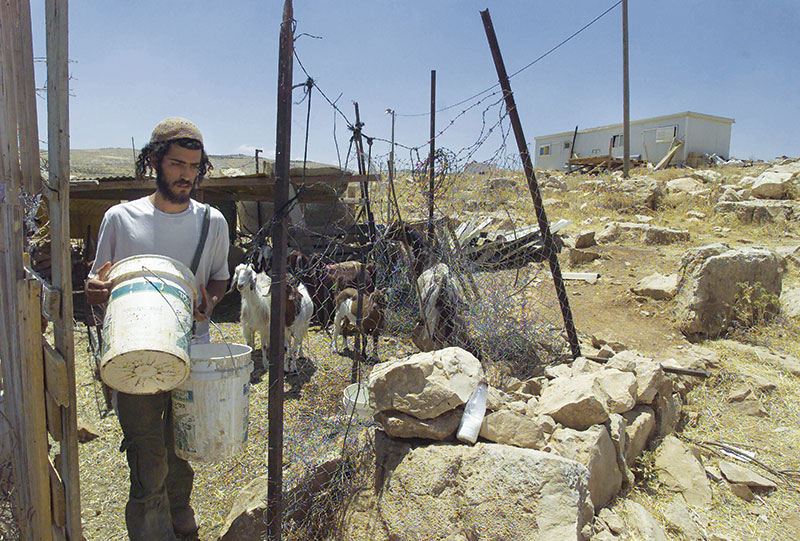
The settlements of Efrat and Tekoa are both located within the Gush Etzion bloc south of Jerusalem, and both, Hirschhorn writes, illustrate “the clash between Jewish-American liberal ideology and settler realities.” The story of Efrat dates back to 1976 when Manhattan-based Modern Orthodox rabbi Shlomo Riskin and one of his followers founded Garin Reishit Geula (Seed Colony for the Origins of Redemption). By 1979 Reishit Geula consisted of 181 families, and in 1980, shortly after the signing of the Camp David Peace Accords, construction at the site began. Hirschhorn describes Riskin as a “quixotic and controversial” figure whose Zionist vision “combined apocalypticism with American utopianism.” Like his allies in the religious settler movement, Gush Emunim, Riskin viewed the Six-Day War as a unique opportunity to “raise Jewish consciousness” by promoting “a program of large scale aliya [that could] provide a crucial impetus to the growth of Torah Judaism in Israel.” His utopian vision of religious nationalist sovereignty notwithstanding, Riskin worried greatly about taking possession of the entire West Bank and thus depriving the area’s Arab residents of what he considered to be their rights. “You couldn’t give the Arabs less than we asked for ourselves as a minority people,” Riskin once responded to the spiritual head of Gush Emunim, Rabbi Zvi Yehuda Kook (son of the famed rabbi Abraham Isaac ha-Cohen Kook), after being asked why he didn’t join his messianic movement.
Though Efrat has been beset by charges of illegal appropriations of land from neighboring Palestinians, Hirschhorn notes that “unlikely alliances” did form there “between Jewish-American immigrants and local Palestinian villages.” In the 1980s and 1990s Rabbi Riskin, who believed “that dialogue was a divine commandment,” tried to forge informal relationships with Efrat’s Palestinian neighbors, even hosting Palestinian leaders in his home during the First Intifada. But over the years, as Efrat has prospered and grown into a municipality of approximately 9,000, these relationships have withered. Riskin himself, as Hirschhorn notes, changed his political philosophy after the First Intifada and the launching of the Oslo process:
“We’ve worked hard to develop a reputation for fairness toward our Arab neighbors,” Riskin boasted in an interview [in 1995], but he had clearly had a change of heart about national sovereignty, as “this land is too small for a separate Palestinian state. It’s a prescription for war, and I don’t want to commit suicide—that’s also an ethical value.”

No American-born rabbi played a part similar to Shlomo Riskin’s in the history of the much smaller settlement of Tekoa, established by American graduates of the Revisionist Zionist youth group Betar not far east of Efrat at what seemed to them at first to be “the end of the world.” While they were imbued from the start with Zionist passion, these young escapees from the America of the radical 1960s and 1970s also “envisioned making the desert bloom in a uniquely American fashion,” as they wanted, in the words of their leader, Bobby Brown, “to build and produce, to advance academic research, and infuse the American style of professionalism into Israel’s communication industry.”
They soon learned that they would have to do so in the face of considerable violence directed against them, which only intensified during the first and second Palestinian uprisings, and continues today. When confronted with the grim realities of life in the West Bank, some American expatriates began to question the liberal attitudes that they had brought with them to the Holy Land. “It was peace, love, and happiness when I first moved here,” maintained Murray Allon, formerly from Brooklyn, in 1991. “I thought we’re making peace with the Arabs by living with them. They work with me, I visit, they visit. I thought we were moving in the right direction, but the intifada threw me for a loop.”
Another American immigrant, Eli Birnbaum, described in an interview with Hirschhorn “punitive actions” where settlers would “come with sticks and break the windows. A simple thing. Not overly violent . . . We didn’t go and beat anyone up . . . that was our way of telling the Arabs we are not going to sit and be quiet.” Other Tekoa settlers broke their silence in different ways. After American David Rosenfeld was murdered in 1982 in a bloody knife attack at the site of the ancient Herodian fortress, members of Tekoa, including Bobby Brown’s wife, Linda, responded with the classical Zionist move of establishing a new outpost. Their encampment in the midst of the neighboring Palestinian village of Ferdis became in time the settlement of Nokdim.
Undeterred by all the violence, the Americans of Tekoa who “turned left at the end of the world” strove to establish a settlement that was uniquely pluralistic. For one thing, it became one of the few Jewish towns in the West Bank to welcome both religious and secular residents and to do so without an admissions board screening new applicants. It was a community that also had room for a singular spiritual leader, the native-born Rabbi Menachem Froman (1945–2013), who responded to Arab violence by cultivating ties with key Palestinian figures, including the spiritual leader of Hamas, Ahmed Yassin. “For the most part,” Hirschhorn tells us, “American-Israelis in the settlement were sanguine about their controversial spiritual leader.” As Bobby Brown put it in an interview with Hirschhorn in 2009,
Look, we have . . . a very special rabbi. He has warm relations with Hamas, with all kinds of people who I would say 99.9 percent of the community doesn’t like. Some people like him less, some people like him more, certainly he is controversial in our eyes . . . yet he lives here.
City on a Hilltop closes with a chapter that focuses not on a specific settlement but on various extremists and moderates within the American Jewish settler camp in general. The extremist minority includes of course the notorious Baruch Goldstein, who in 1994 massacred 29 Palestinian worshippers at the Cave of Machpelah, as well as lesser-known figures such as Era Rapaport and Jack Teitel, who also committed heinous acts of violent terror against Palestinians. Most American Jews in the West Bank, as Hirschhorn makes clear, have “rejected . . . vigilantism for both ideological and tactical reasons.” But Hirschhorn spends less time elucidating these reasons than she does describing groups of Israeli American settlers who have turned their activism into professional careers as English-language media spokespeople, politicians, journalists, and lobbyists, many of whom have defended the settlement enterprise with what she calls “American-style rights talk.” Hirschhorn cites the spokeswoman and translator Shifra Blass, for instance, who marched on Washington in 1968, vociferously objecting to settlement bans in the occupied territories in 2009 as “outrageous in terms of human rights . . . Could they really say [you can’t live here] because you are a Jew?”
City on a Hilltop is superbly researched, altogether accessible, and will dispel many lazy stereotypes about the people whose story it tells. But it leaves out a lot. In the Middle Eastern Jewish “city on a hilltop,” just as in the New England Puritan “city upon a hill,” there are divergent answers to the question of how to construct a utopia whose influence would shine out to the world. Hirschhorn however doesn’t tell us enough about the settlers’ differing views with regard to Israeli society, politics, and religion. Her account of Tekoa’s pluralism does touch on such matters, but a thicker description of the settlers’ own understanding of their relationship to the rest of Israel would have greatly enriched her narrative.
City on a Hilltop glosses over another highly significant aspect of the settlements’ religious life. While giving us for instance some sense of Rabbi Riskin’s theological bent, it really doesn’t clarify the nature of his fundamental beliefs about the relationship between political Zionism and an ultimate messianic redemption. An equally important American-born resident of the West Bank, Rabbi Aharon Lichtenstein, is mentioned only once, and merely as one of Riskin’s teachers back in the United States. A son-in-law of Rabbi Joseph Soloveitchik and a co-dean of Yeshivat Har Etzion in Alon Shevut, Lichtenstein was one of the few rabbinic figures in the West Bank who did not automatically oppose the Oslo Accords’ land-for-peace paradigm on religious grounds. He and other American Jewish immigrants in the Gush Etzion bloc and beyond have been instrumental in introducing into the Israeli religious sphere a pragmatic understanding of the messianic idea that competes with the mystical convictions of Gush Emunim. On closer examination, Riskin’s messianism, and that of the community he founded, may not turn out to be quite as “apocalyptic” as Hirschhorn would have us believe it is.
Efrat itself may have a touch of “Occupied Scarsdale” to it, to borrow the phrase of one of the town’s critics whom Hirschhorn cites, with its “two major commercial complexes with full-service supermarkets and . . . other businesses, such as a dry cleaner, clothing boutique, optometry clinic, toy store, Judaica gift shop, post office, bagel bakery and café, pizzeria, and hamburger chain franchise.” But just beneath the placid suburban surface, there is a decidedly different reality. That excellent pizzeria for instance is owned by a man whose soldier son died in a parachute accident. According to army reports, his chute got tangled with that of his commander. He cut his own cords and fell to his death when his reserve chute couldn’t open in time, ultimately sacrificing his own life in order to save his commander.
I have heard Rabbi Riskin speak about this incident, which he calls a true Kiddush Hashem, a sanctification of God’s name. Efrat’s pizza shop, presided over by a man whose sadness is etched in his face, might look like it’s in America, but it’s part of a story that is uniquely and irreducibly Israeli.
Suggested Reading
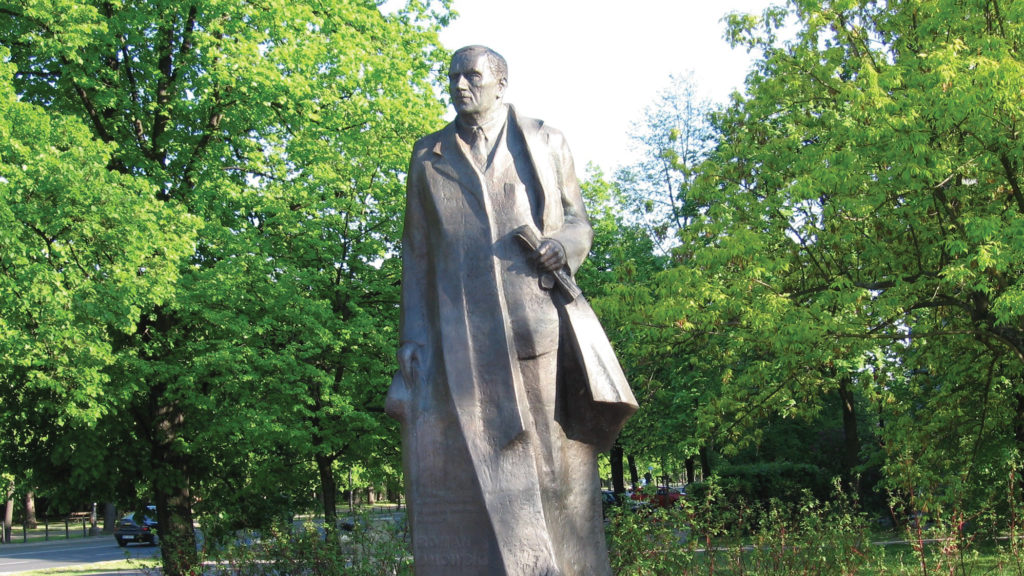
What We Talk About When We Talk About Stepan Bandera: A Rejoinder to Dovid Katz
Konstanty Gebert responds to Dovid Katz's critique.
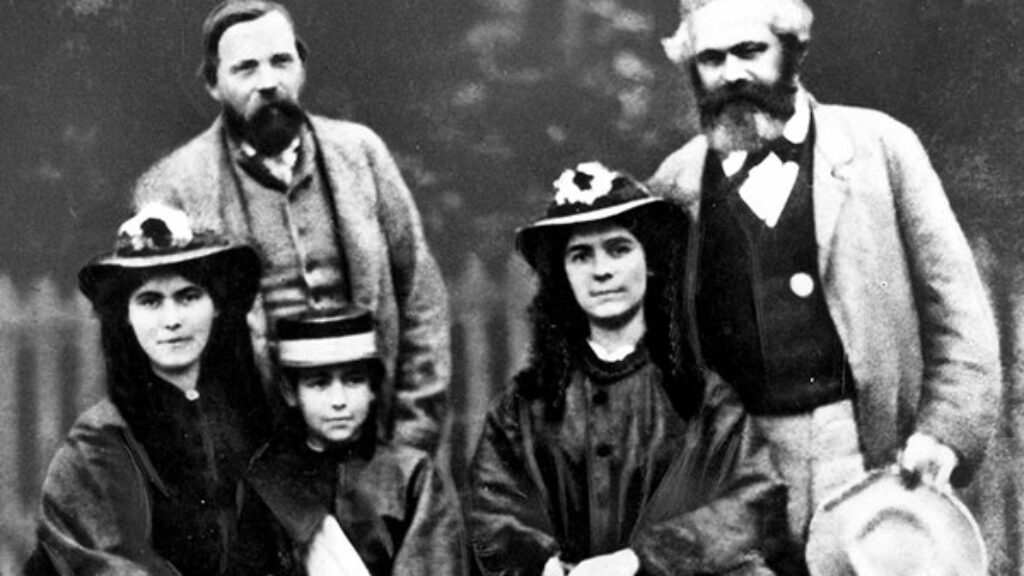
Marx and the Jewish Fingerprint Question
Are there hints about Marx’s thoughts on Judaism in his writing, and if so, what do they say?

The Tikkun in Sutzkever’s Work
Elie Wiesel explores the soul and purpose of Holocaust poetry.
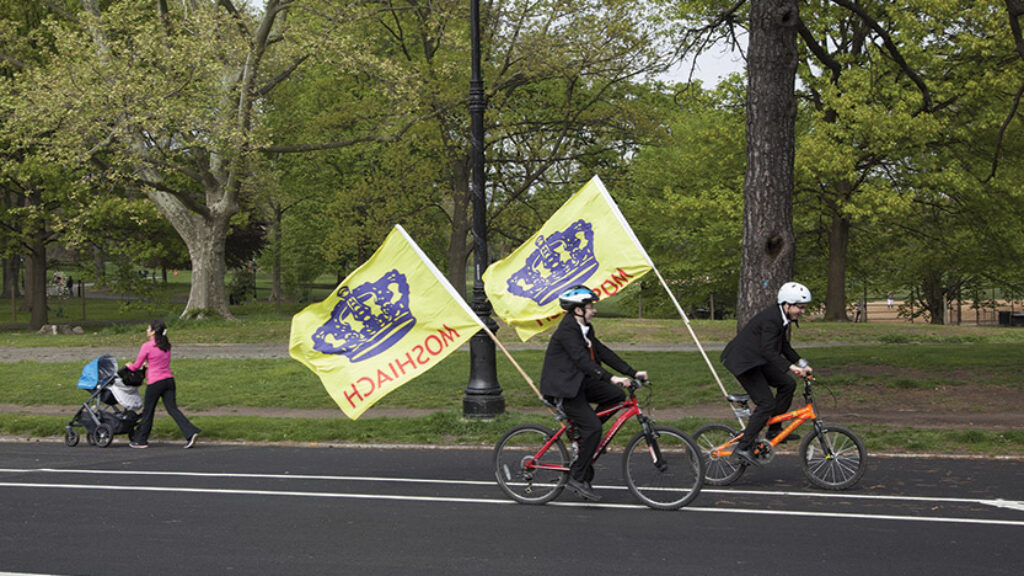
Foundation Stone
The meshichists remove the covering from Schneerson's red velvet chair because he will be sitting on it during prayer; they gaze at the spot where he is believed to be stationed; and they call him up to the Torah for aliyot, parting ways to make room for him as he “walks” up to the bimah.
Comments
You must log in to comment Log In